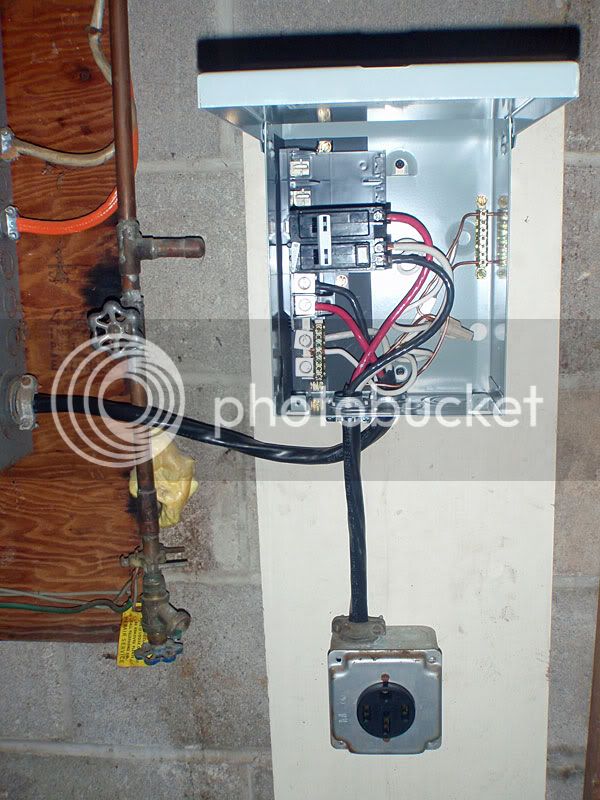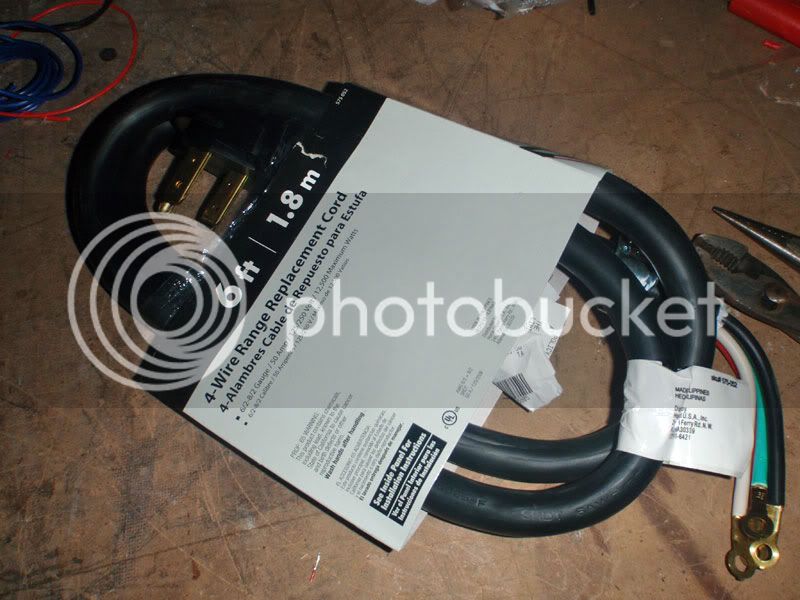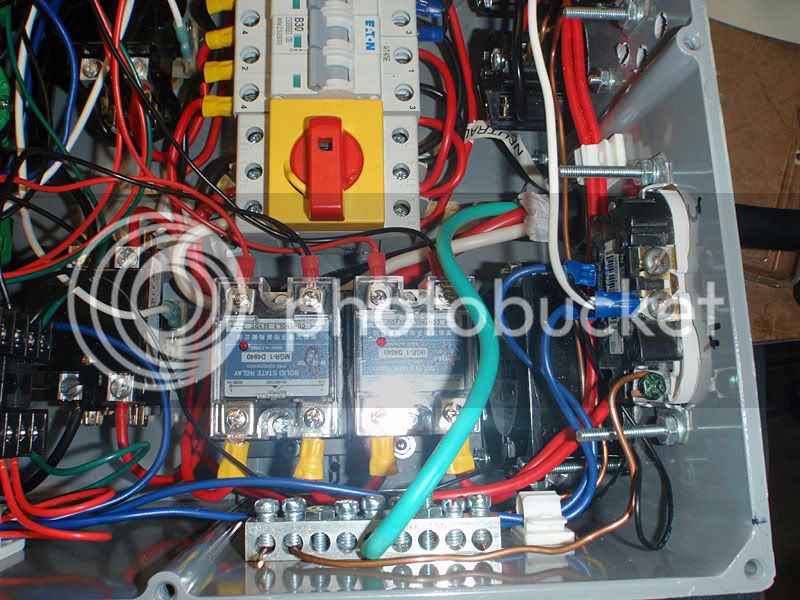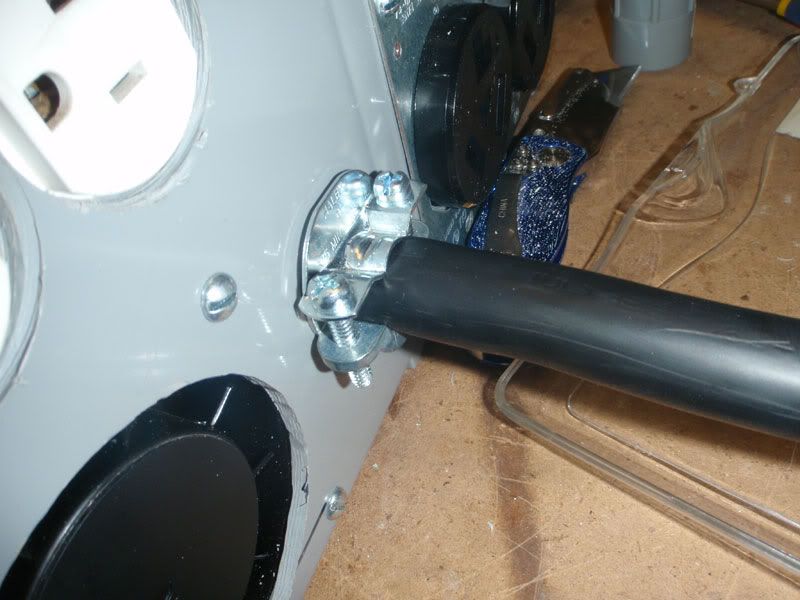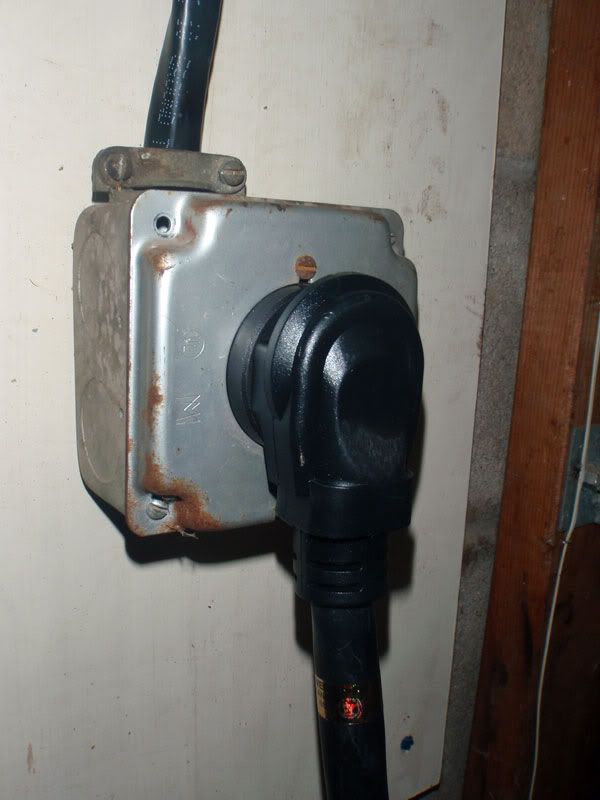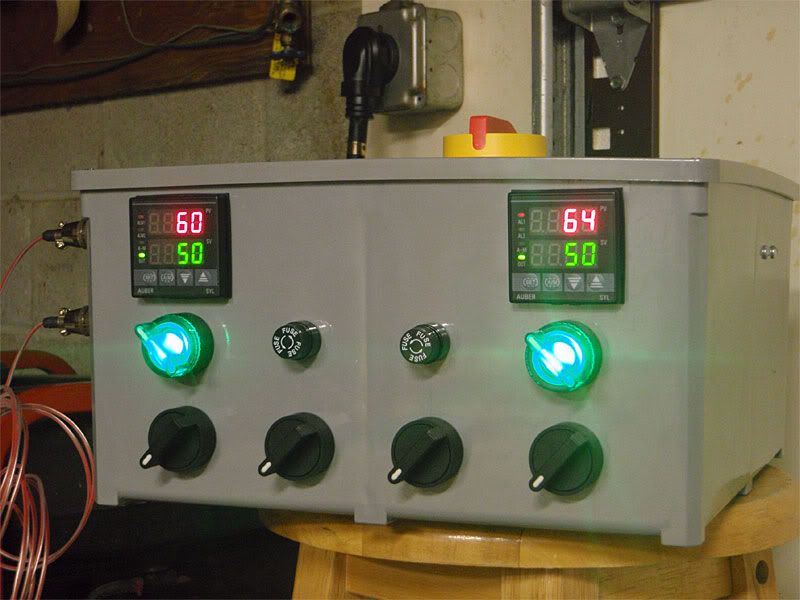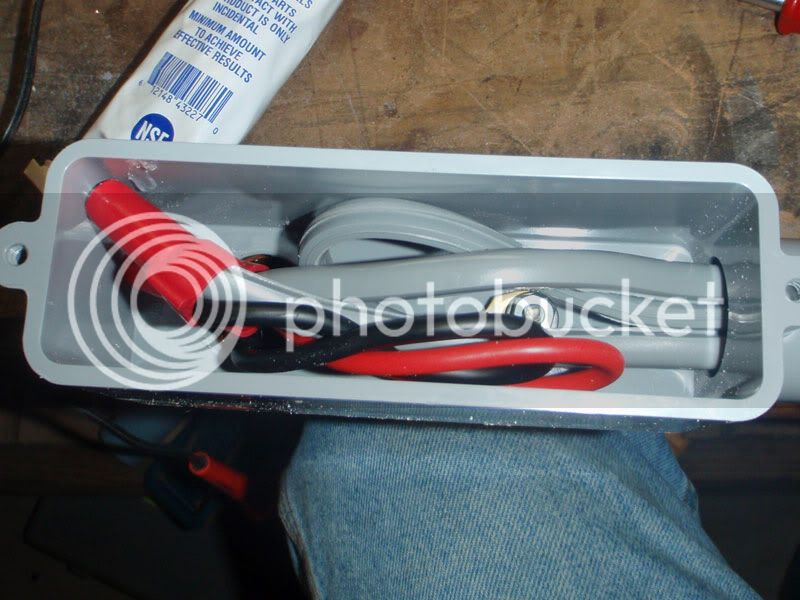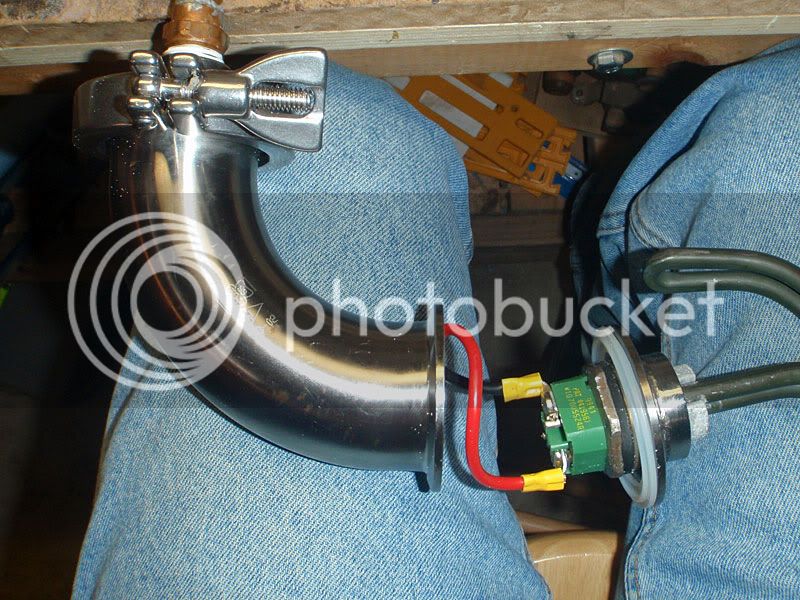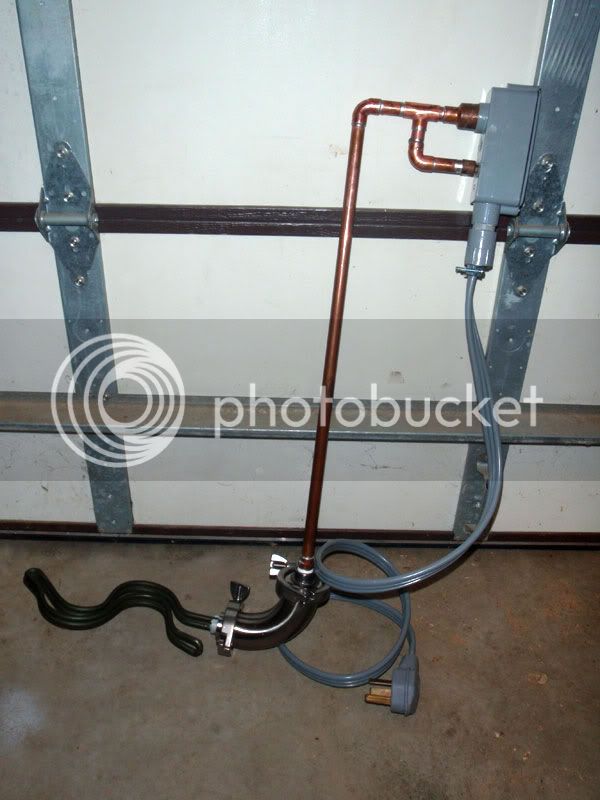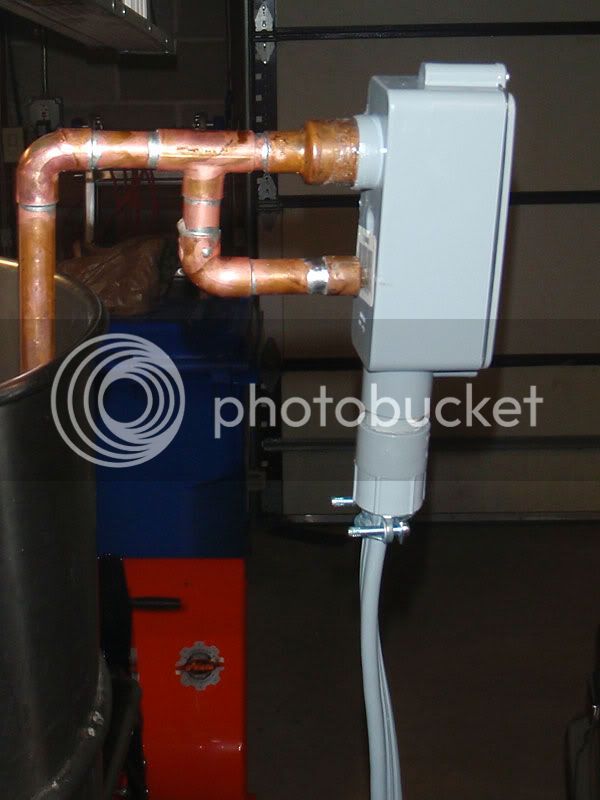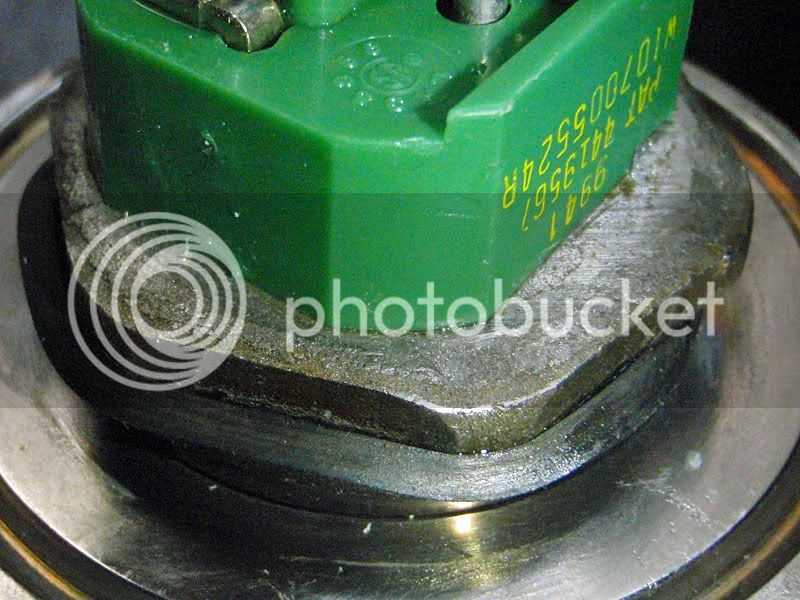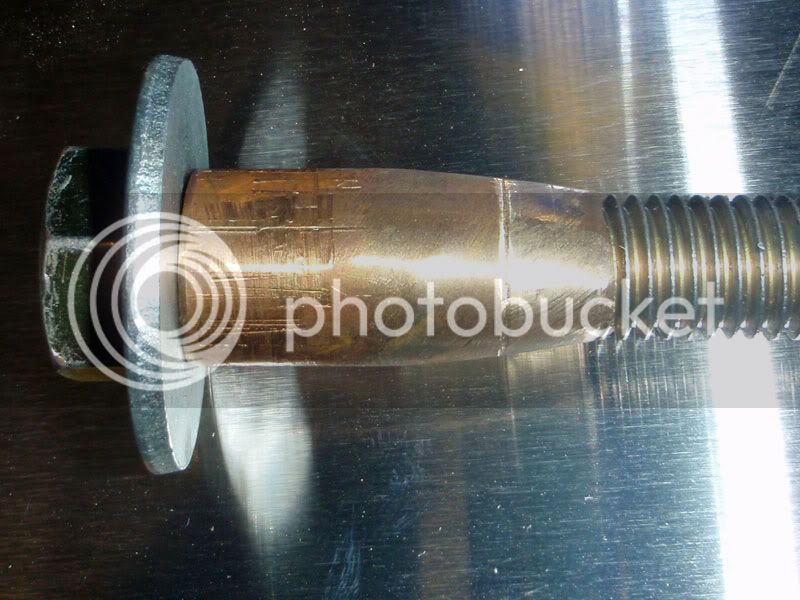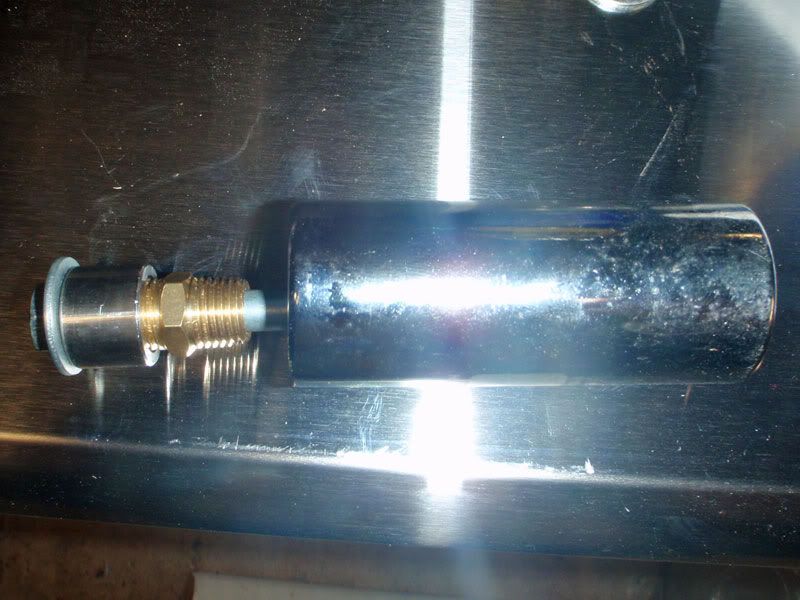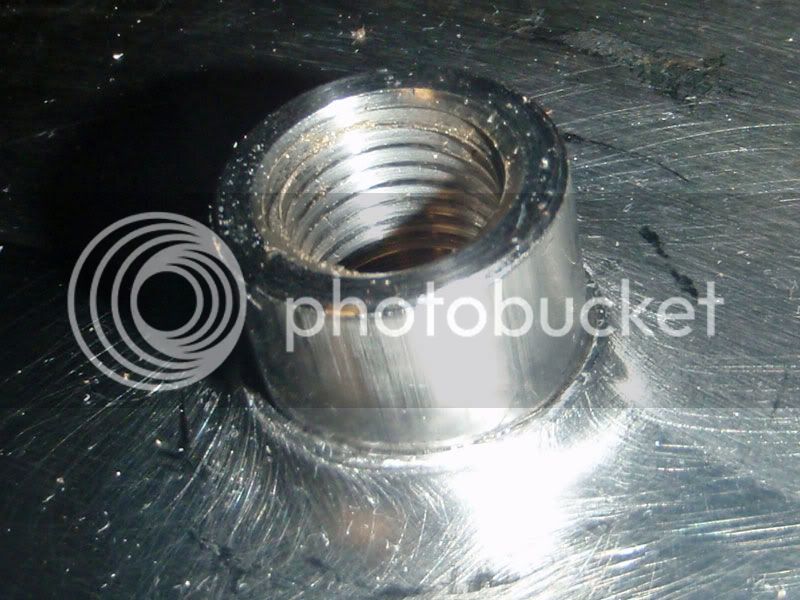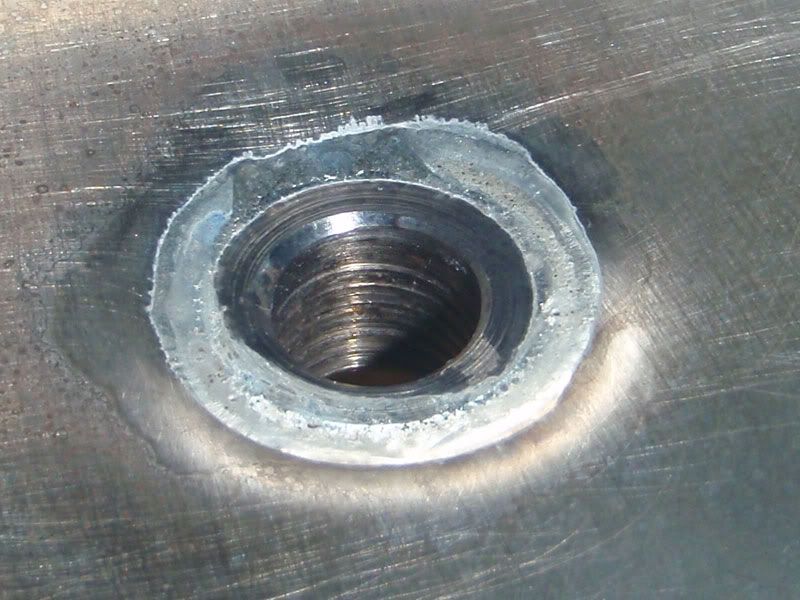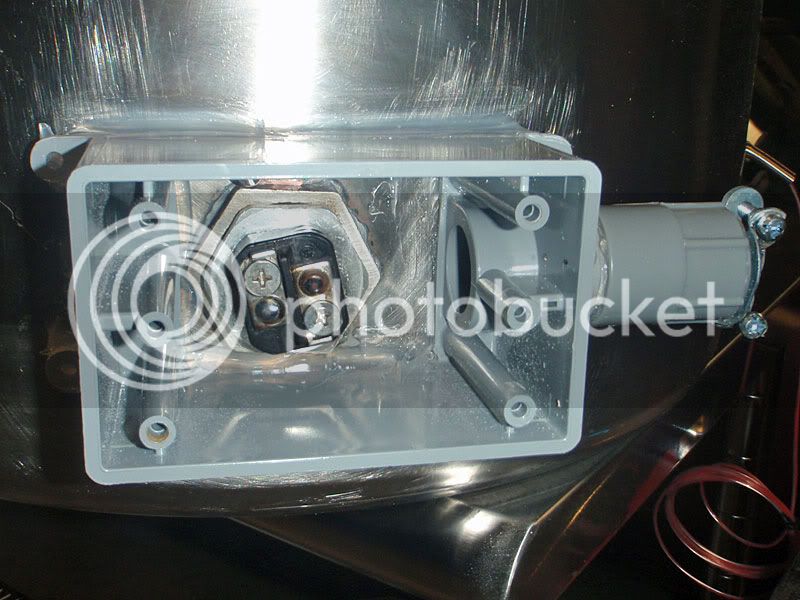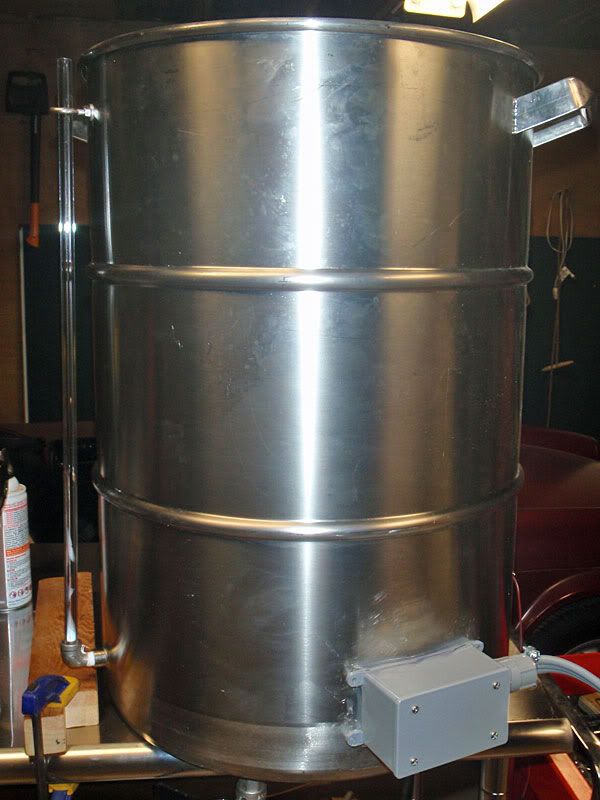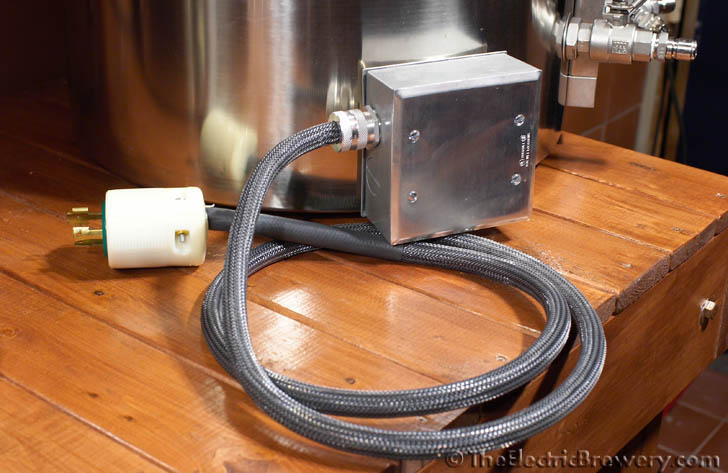Good news - it works! And I learned something about the PID. Pictures first. You may remember my
Heatstick of Doom construction thread. I finished that up tonight.
Attached an outdoor junction box to the top and wired it up.
Then I wired in the element.
And the completed heatstick.
Here's a closeup of the top of it hanging out of the kettle. That copper framework there both supports the box and provides a grounding lug so the whole thing has a safety ground back to the main.
Now what did I learn? Well, the PID has a setting for cycle time, t. From the factory, t = 2. This means a 2-second cycle time, such that if you set the manual mode to 20%, the element will be on for 0.2 seconds and off for 1.8.
Now the manual says for PID use, go with t = 2. Other folks on this forum have said to go with t = 0 to get a 0.5 second cycle time. So I tried it.
With t = 0, if I set the PID in manual mode to anything less than 50%, it was just off constantly. If I set it to 50% or more, it was on constantly. Once I set t = 2, the element cycled appropriately.
Then I was playing with setting t = 1 and back to 2 when my GFCI breaker tripped. I hope it was just an artifact of me messing with the settings while the element was running and not a leak in my heatstick :/ I'll know tomorrow.
Moral of the story: listen to the manual

Video is processing now.
-Joe


